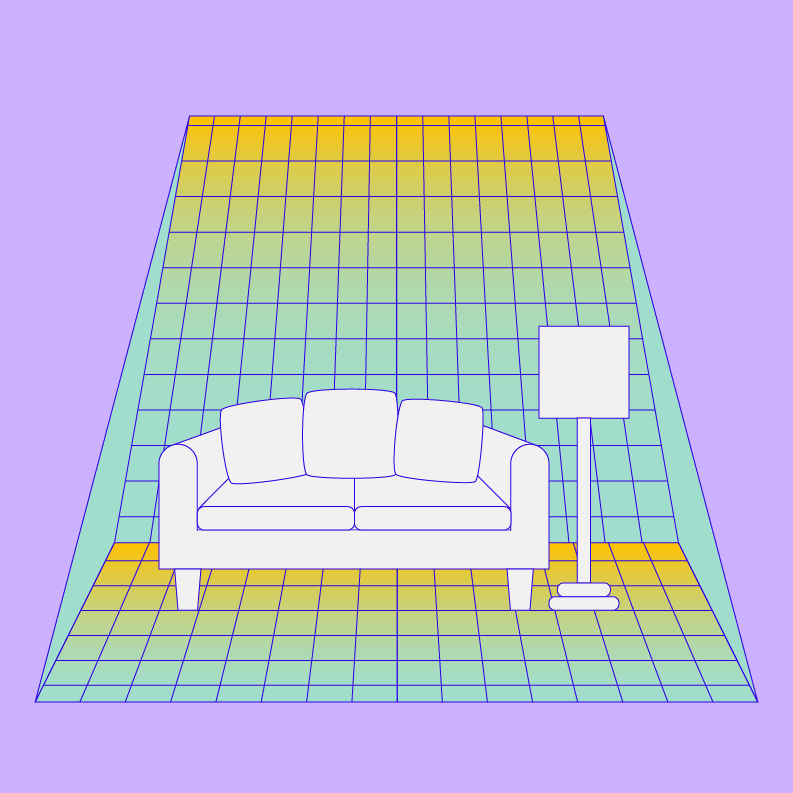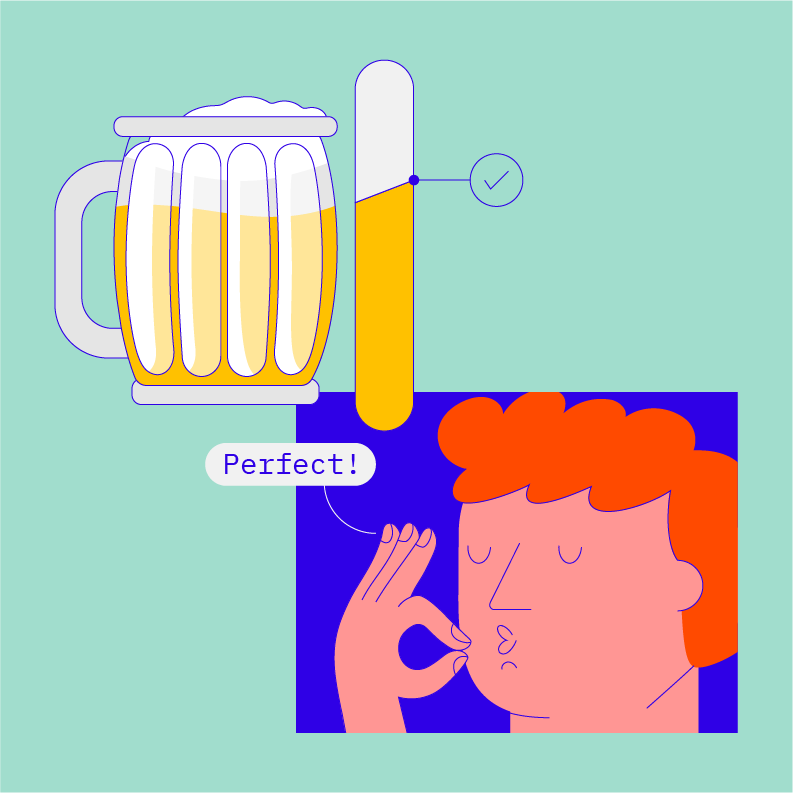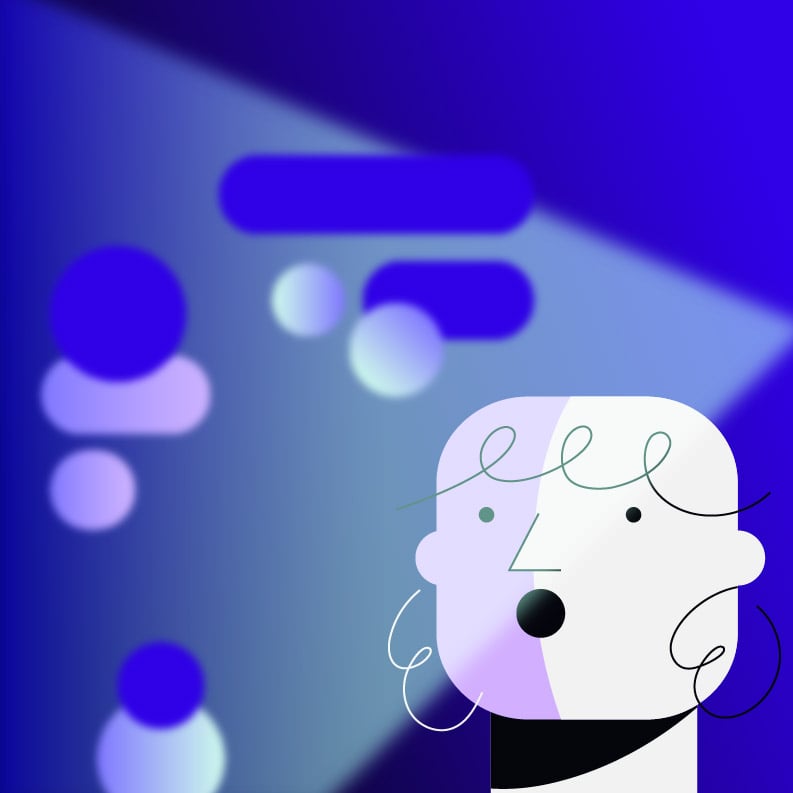In the time it takes me to sip from my water glass, I'm transported to Michael Kristofka’s home office some 890-odd miles from my dining room table.
Kristofka, whose resume in the business strategy, experience design, and consulting fields includes brands like PwC, Razorfish, and the Walt Disney Company, has had a front-row seat to the digital transformation process over the course of his career.
We exchange pleasantries via video call, a token of the so-called “phygital” revolution—the cultural phenomenon now so ubiquitous, most of us are unaware it has a name.
I’ll cover:
What Is Phygital?
“Phygital,” a mashup of the words “physical” and “digital,” began as a marketing term to describe the merging of physical and digital experiences.
“I think people interchange it with the term ‘omnichannel,’ but it gets lost in that term’,” says Kristofka, referring to a term similarly used in sales and marketing. “I don’t get a visual sense of the word ‘omnichannel,’ so I love ‘phygital’ in that respect.”
The term itself is not new, but it is increasingly relevant in a post-pandemic world. As we collectively knit a tighter bond between our physical lives and our devices, virtually every industry has done the same—or is at least trying to.
“Almost all industries really require this transformation,” notes Burkay Alpyildiz, an entrepreneur and mentor who has had a global presence in phygital experience design and strategy management since 2001. “Whether they acknowledge it or not, every business is in this transition period.”
In many respects, phygital experiences have become the status quo in our day-to-day lives.
Self-checkout kiosks, video chat, and smart home devices have us casually bridging the gap between the physical and digital worlds as nonchalantly as we pop the tab on a can of soda. There’s no question that we live in a world of phygital experiences—what’s intriguing is how far today’s brands are taking it. And, frankly, whether some have gone in the right direction.
Anatomy Of A Phygital Experience Strategy
Despite the post-pandemic push to “return to normal,” our world has permanently changed. The innovations borne of necessity—such as massive pushes for delivery or “no-contact” shopping options—are here to stay. But now, as we shake off the dust and return in droves to public spaces, more businesses are facing a new hurdle; now that we’ve fine-tuned our digital spaces, how do we re-imagine the physical space?
“The biggest challenge is determining how much or what part of [customers’] experience they are happy doing on their phone or online,” explains Kristofka, “And then what are they missing that the physical environment can deliver?”
To embrace this new frontier of “phygital” experiences, brands need to be thinking about four main goals.
1. Create Immersive Experiences
The core principle of phygital experience is to create immersive experiences that can’t be achieved in one stratum alone. Nike has been a leader in this arena by making calculated decisions for their physical experiences based on digital user behavior.
“Nike's digital strategy resulted in how they change their experiential marquee stores,” Kristofka comments.
This approach has led to exciting experiences like their Move On campaign. Using phygital experience platform Broox, Nike created a dance tutorial and video capturing space that resulted in 7000 user-generated videos, 9000 interactions, 90% dwell time, and 6000 email captures. And that’s just one example from the notoriously CX-forward brand.
2. Align All Physical and Digital Touchpoints
Part of what differentiates a brand that offers a physical and a digital experience from one that pursues a phygital experience is the marriage of the two spaces. At a minimum, all brand touchpoints should reflect the same messaging and visual identity—from in-store assets to email offers. But the real test is whether the brand can successfully use its digital offerings to remove barriers to the physical experience, rather than siloing purchases into “digital” or “in-store” buckets.
Starbucks is an excellent case study in touchpoint alignment thanks to the integrations between their cafes and mobile app. Their mobile order-and-pay feature, built by digital transformation consultancy Launch, boosted Starbucks’ revenue by $4 billion while creating a practical solution to their core customer’s key pain point: waiting in line. Seeing an opportunity to fast-track their caffeine fix without completely bypassing the in-store experience, Starbucks regulars gleefully adopted the feature in 2014 and haven’t looked back.
3. Stay Laser-Focused on Customers
Any massively expensive experience is ultimately worthless if customers don’t want it. The range of reactions from the majority of consumers to Mark Zuckerberg’s money-burning Metaverse—from apprehensive, to confused, to terrified—can teach us at least that much.
“What’s happened [with the Metaverse] is self-explanatory,” says Alpyildiz. “We need to have smart digital solutions that involve humankind.”
It should be obvious that the success of a phygital strategy hinges on whether it delivers an experience that customers actually want.
Yet even global brands like Meta are vulnerable to making poor bets on consumer behavior, as evidenced by the massive layoffs taking place as I write this.
In order to be successful, experiences should be intuitive while leveraging the things that activate people in your target niche. Kristofka points out the eyewear brand Warby Parker.
“They used to be a D2C product and now they’re expanding with additional services, like [eye] testing in stores,” he explains. “So I even see D2C brands reimagining their ability to provide a physical experience that really matches what their targets want.”
Some questions for cross-examining phygital experience ideas might include:
- Will this experience entertain or solve a problem for the customer?
- Is it “gimmicky,” or is it actually delivering value to the customer?
- Does it align with what we know motivates our target customers?
- Will it continue to pay dividends in the long term?
4. Bring It Back to the Real World
Now that even the most traditional industries have digested the value of digital transformation, there’s evidence to suggest an unexpected side-effect of our screen-obsessed world: a tunnel-vision view of customer priorities. Take terms like “Instagrammable,” a marketing term that implies a physical place or thing that services one’s digital identity—rather than the other way around. Brands need to pause and ask the question, are we treating customers like human beings with real lives, or as 2D online avatars?
“Being digital doesn’t mean all the physical attributes of businesses are going to disappear,” says Alpyildiz.
Kristofka cautions brands against interpreting “phygital” to mean “evolution from physical to purely digital.” He harkens back to his time at Razorfish, a digital experience agency.
“At the time we were always saying, ‘digital first, go digital first,’” he recalls. “Then you started hearing things about the demise of the store, or the demise of shopping. So what I find interesting is that phygital experience really focuses on how we really live, and it puts a lot of emphasis on imagining the physical spaces that we engage with.”
Ultimately, a brand experience should benefit the users’ real life, not just the version of it they put on the internet. While that may read as a platitude, there are real-life consequences to incentivizing people to be more “online.” A cultural push on gaining “followers” is happening in lockstep with a loneliness epidemic. Tech companies are betting the farm on pandemic-level user activity, but according to Tash Grossman, CEO of retail app Slip, customer demand for in-store experience is at an all-time high.
“Although the pandemic has escalated the move to e-commerce, the current market data proves the demand for in-person retail experiences,” Grossman told TechRound in April of this year. After years of subsisting on our screens, there’s even evidence that digital experiences as a whole are wearing on some users. In their 2023 Trend Report, Trend Hunter has even identified a trend toward digital detox products that help alleviate the negative effects of constant screen time on our mental health. So, resist the temptation to prioritize the digital experience and put that energy into offering something really special out into the real world.
Phygital Experience Examples By Industry
With a clear picture of what a phygital experience should offer, the next piece is the concept. How might you captivate the minds of the audience for your vertical? What might it look like for B2B?
Fortunately, there’s no shortage of real-world cases to pull inspiration from. Here are a few examples of how brands across industries are successfully pulling off a phygital strategy.
Phygital retail

IKEA
Furniture and homewares giant IKEA understood the potential that tech like AR and VR could have for their business. In addition to app-based design tools, allowing customers to “place” items in their space, they’re constantly evolving their tech offerings to enhance the in-store experience.
“They're delivering digital experiences such as design platforms [in which] you have professional designers that can collaborate with you,” Kristofka enthuses.
Using their platform, IKEA’s planning service works with customers to recommend and fine-tune their design choices and help them make purchase selections. Customers are then free to visit the store for in-person help, pick up their products, and peruse their showrooms for finishing touches, a phenomenon Kristofka calls “in-context browsing.”
Canada Goose
Outerwear brand Canada Goose is well-known for its down coats, which tout streamlined silhouettes along with industry-leading protection from the elements. In their Toronto store, the brand decided to omit inventory altogether and go all-in on experiential marketing.
Dubbed ‘The Journey,’ shoppers travel through a “crevasse”—a narrow room with floors that mimic cracking ice and imitation stone—as well as rooms that recreate different settings and climates that best suit their various products. The big wow moment happens in the “Cold Room,” a 10ºF (-12ºC) room with wall-to-wall display panels, voiceover commentary, and most impressive of all, a daily snowstorm. The final room is filled with kiosks where shoppers can select and purchase products to arrive at their doorsteps by the following day.
Phygital healthcare

Prof. Dr. Barış Çaynak
Phygital experiences aren’t all flash and flair—these approaches have real impacts on critical services like healthcare. With medical tourism on the rise, Alpyildiz describes how a ‘phygital’ approach to healthcare allowed him to help cardiac surgeon Prof. Dr. Barış Çaynak offer life-saving services to patients in other countries.
“We designed his digital presence, created new communication channels, and re-structured all his onboarding procedures for patients to be able to onboard patients from all over the world,” explains Alpyildiz.
In addition to making patient care globally accessible, Alpyildiz’s team has also helped Çaynak offer web-based surgical training on his minimally-invasive techniques.
J5 Design
Strategic design studio J5 Design worked with the Gordie Howe CARES foundation to create a support experience for caregivers of loved ones living with Dementia. After extensive research with their target users, they developed a smart, compassionate solution: an app that can assess patients, provide personalized care recommendations, and help caregivers access support and coaching from peers and care professionals. The project’s long-term mission also includes building an online support community and physical respite space to provide caregivers a place to connect with others experiencing the same challenges.
Phygital banking

Tangerine
Quirky Canadian bank Tangerine has never been a typical financial institution. The fintech company started as a digital-only money management solution on the premise that physical branches were not a necessary feature of modern-day banking. However, the numbers told the story that the digital-only approach was losing out on a sizable market: a 2017 study revealed 50% of consumers still found value in speaking with a bank representative in person. So, Tangerine later pivoted to offer physical branches—but they’re not a typical bank, and the branches aren’t typical either. Tangerine’s “Cafés” and pop-up locations boast on-site financial advisors in a coffee bar setting.
Phygital real estate

Gryd
Canadian startup Gryd supports the real-estate industry with high-quality 3D renderings of properties that have an impressive range of applications in the industry. In addition to being able to provide virtual “open houses” for prospective buyers before booking an in-person tour, Gryd’s tech also allows home stagers and designers to use a home’s real dimensions to plan and execute interior design projects. Gryd also enables developers to create lifelike renderings of properties months before a new development is ready to hit the market.
Bōde
Based in Calgary, Canada, real estate platform Bōde gives real estate sellers a suite of digital tools to make private sales as fast, user-friendly, and affordable as possible. The company helps facilitate everything from home photography, listing, marketing, and offer management, giving sellers more transparency and ownership over the sales process than they’d have with an agent. The platform even helps guide users through the legal steps for transferring ownership once an offer is accepted.
Phygital food and beverage

Pubinno
Based in Turkey, Pubinno is all about helping bars and restaurants improve customer experience and control costs with their intelligent beer distribution products. Using IoT technology, products like the SmartTap control the flow rate of beer and amount of foam, allowing restaurants to save up to 20% on keg inventory, and provide analytics to the SmartHub about product output to help restaurants manage costs.
Alpyildiz, who mentored the Istanbul-based company, was impressed by the digital innovations to enhance the physical restaurant experience.
“It produces perfect beer from first glass to last glass,” he remarks.
Phygital tourism

Casa Batlló
The award-winning Gaudí museum Casa Batlló is a triumph in phygital experiences. Located in Barcelona, the historic home was originally built in 1877 and purchased by Josep Battló, who gave legendary architect Antoni Gaudí total creative license to make the estate into a marvel of design. In the century-and-a-half since the building’s conception, it has been transformed into a completely immersive phygital experience. Combining inspiring physical design with a mindblowing audio-visual display, the museum now markets itself as “the house of magic.”
Phygital automotive

BMW
True to their brand promise, “The Ultimate Driving Experience,” BMW spares no expense to give brand loyalists and potential customers reasons to buy into the brand’s reputation. In particular, their BMW M Driving Experience invites drivers to sharpen their driving skills and experience a drive in one of their revered M-series vehicles. BMW’s slick online signup and dynamic image galleries (aptly referred to as ‘impressions’) tempt users to sign up for the multi-day experience, which combines practical skills lessons with raw adrenaline and European luxury. Participants can enroll in winter or summer programs, such as Snow Courses or a Race Track Experience, and enjoy an ultra-luxe Austrian escape while off the road—such as helicopter tours and accommodations at the 5-star Das Central hotel.
Phygital B2B: Putting Community First
At a glance, the phygital model seems to be best applied to B2C industries. Should B2B count themselves out? According to Kristofka, some of the most impactful applications of phygital experience are a perfect match for B2B brands. He gives the example of a past project he worked on; a series of networking events for kitchen and bath designers sponsored by a trade partner brand.
“In this community, you had very large design firms to sole proprietors, to like a small group of like three to five designers in one firm,” Kristofka recalls, “But they all were thirsty for information of how to do this, or where do you source that, or how do you deal with this problem.”
The event series was a smashing success, allowing the new community to learn together while also discovering the sponsoring brand’s solutions and the role it could play in their business. There was just one caveat.
“They then had no way to continue that relationship,” says Kristofka. So, they created a digital experience to take the new community online and offer ongoing support and advice on hot topics to its members.
“Things like, what your fee should be,” he explains. “We had business coaches available to small proprietors. We had design trend ideas. We also had the ability to go to trade shows and bring [the online community] little snippets of what people are doing in the industry.”
The Future Is Phygital
Today, in the mature stages of the Information Age, the current saturation of connected devices suggests that we’ve submitted to a near-complete digital takeover. Self-checkout kiosks and online shopping are steadily replacing jobs once filled by humans, and real concern has begun to mount about the human cost of AI as it rapidly consumes the labor market.
"We don’t yet know the real consequences of digital disruption,” muses Alpyildiz. “But we know there are consequences to discarding people from industry.”
Despite the rising tide, few of us would dream of doing away with our smart devices and beloved internet communities. But there’s hope for a happy medium.
Rather than worry that digital advancements could render our physical world obsolete, Alpyildiz and Kristofka argue that the physical space is more important than ever—just in a new, changed state.
“Digital is changing the ways we shop, changing the ways we communicate, changing the ways we develop relationships, so we will expect the physical to do something different,” predicts Kristofka. “What I think might happen is that the footprint of what you see in physical stores might change. You might have fewer products but the only products at the store are those which you have to touch and feel.”
“Digitizing things shouldn’t mean discarding people,” says Alpyildiz, “In the next couple of years, people realize we need to be more constructive, be innovative in a way that won’t disrupt humankind.”

